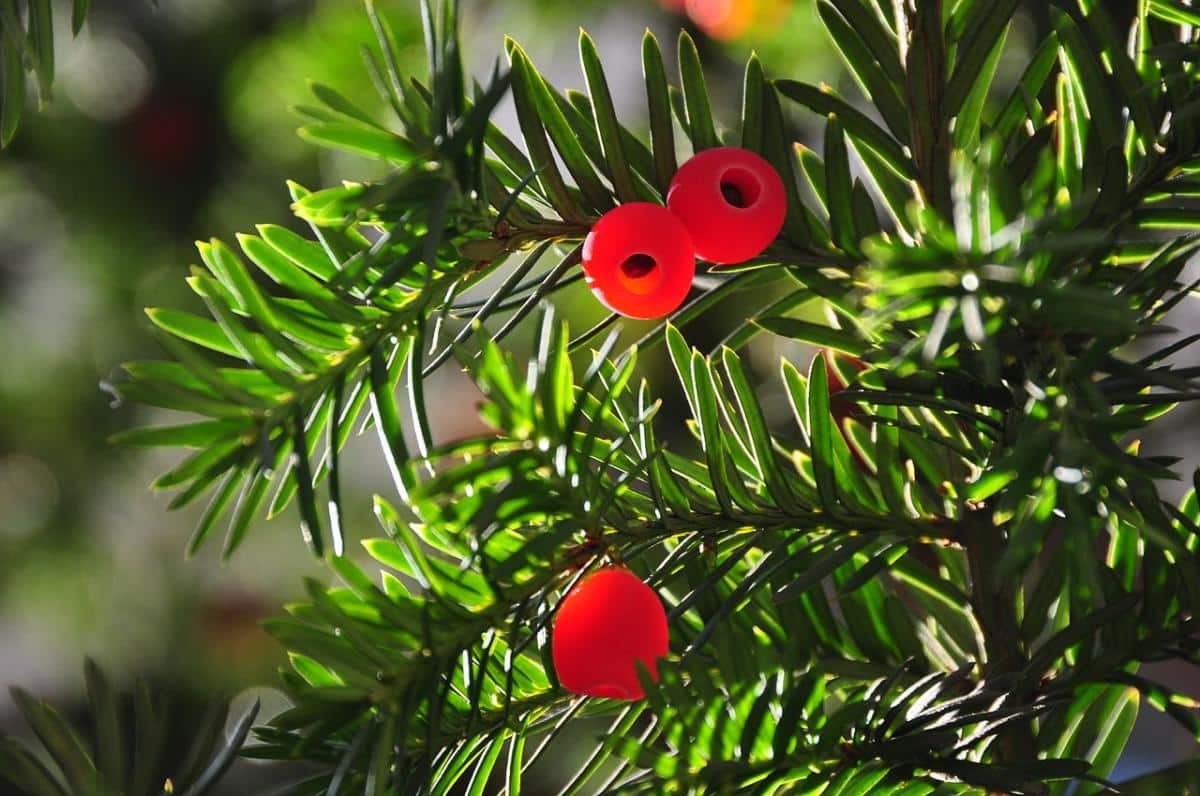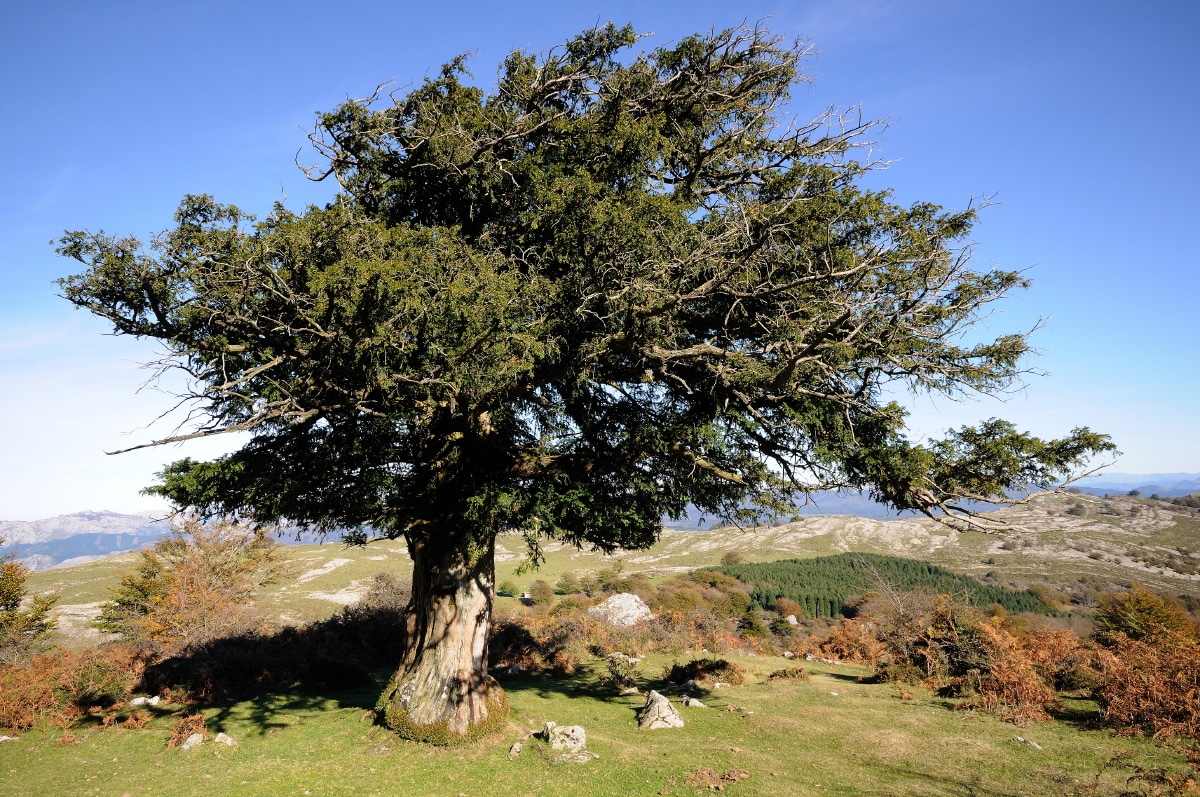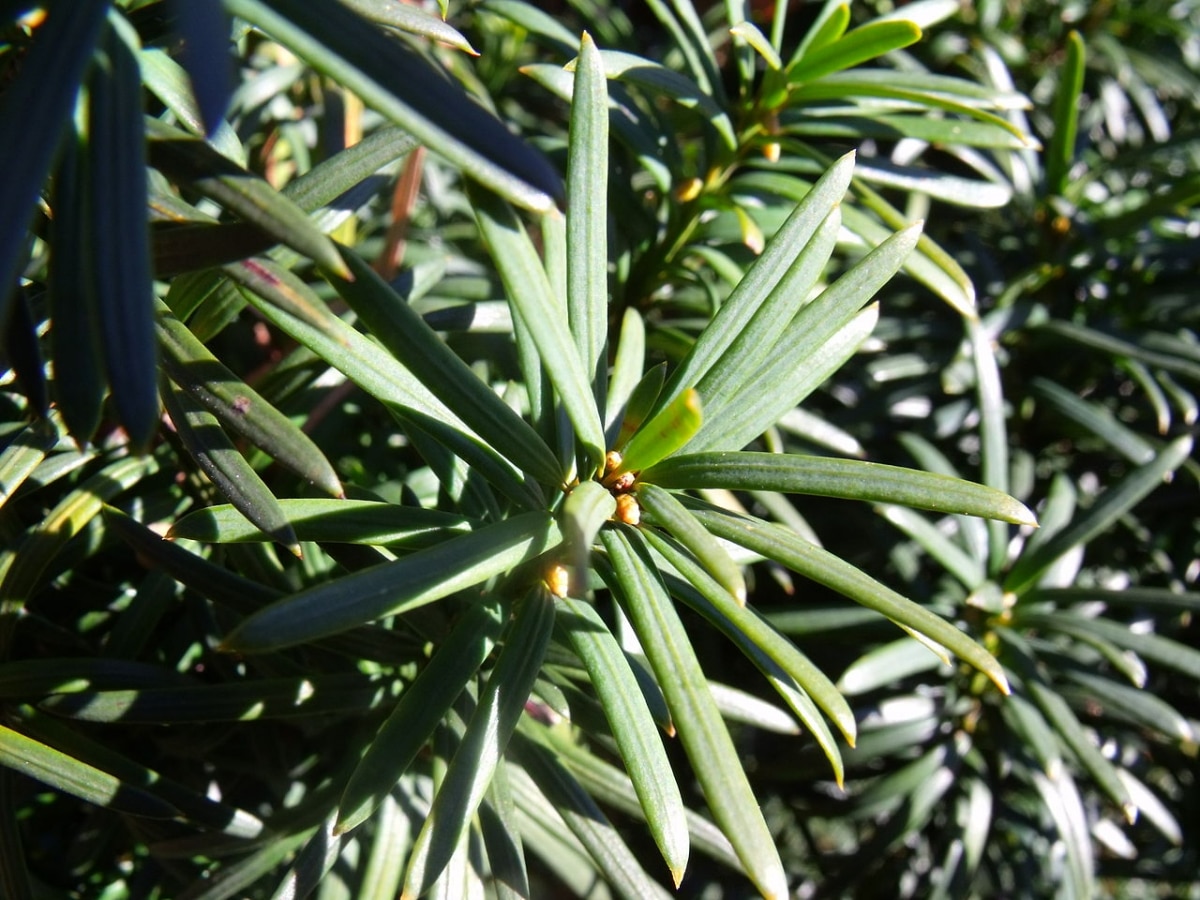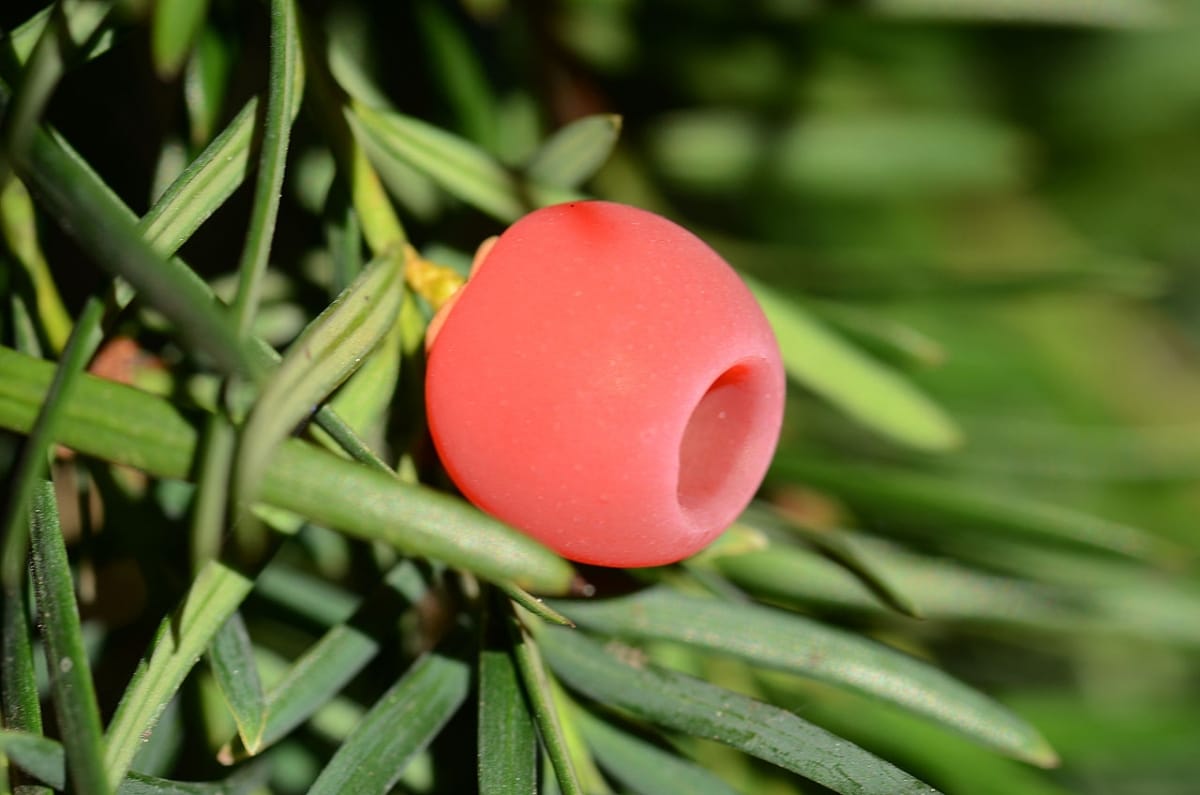
Image – Wikimedia/Mykola Swarnyk
El yew It is a tree that grows very slowly, but as is often the case with this type of plant, it can live for a long, long time: more than a thousand years. And for this, in addition to taking advantage of its energy to grow slowly, what it does is protect itself as best it can from its enemies. In fact, the only thing that could be eaten without problems is the aril, that is, the fleshy part of the fruit, which is red when its ripening process is complete.
We will find it on the European continent, in addition to the United Kingdom. To be more exact, it must be said that prefers to live in places where the climate is mild to cool, that is, where temperatures of up to -25ºC are the minimum, and positive 30 degrees are the maximum. It supports cold much better than heat, so it will look much healthier, for example, in high-altitude areas than near the sea.
What is yew?

Image – Wikimedia/Paulo Etxeberria
The shuffle it is an evergreen conifer that reaches a height of 20 meters, sometimes 28 meters, and which ends up developing a thick trunk about 60 centimeters wide. The crown is somewhat irregular, wider at its base, and very dense. The leaves are lanceolate, dark green, and about 5 centimeters long.
Its flowers are solitary, and bloom in early spring.. These are unisexual, and appear in different specimens. The fruit is a cone that could be confused with a small berry, about 1 centimeter wide, which is fleshy and therefore soft. This protects a seed that usually takes about two years to germinate.
In common or popular language it is known by several different names, such as black yew, European yew, or common yew. Now, its scientific name is only one and it is Taxus baccata.
What is?
This is a tree that for centuries has had and has very diverse uses:
- Wood: this is hard but flexible, so it was used to make arches, as well as frames and furniture of all kinds.
- Decoration of rural churches and similar places: as the yew is so long-lived, for many it is a sacred tree, which is why it has been planted and is planted today in religious places.
- Ornamental plant: in a garden, as an isolated specimen, it looks very pretty. However, since there are similar but faster growing trees, such as the Thuja, the common yew is no longer used as much as it used to be.
What part of yew is poisonous?

Image – Wikimedia/Oceancetaceen Alice Chodura
Indeed, all its parts are, except for the fleshy part of the fruit. The dose of between 50 to 100 grams of leaves is considered lethal, but actually both the seeds and the bark are also dangerous if ingested, regardless of whether they are on the plant or in the ground.
This is so because they contain a series of alkaloids that act on the heart, causing it to stop beating. Therefore, you should never consume it, under any circumstances.
Where are there yew trees in Spain?
El Taxus baccata is present especially in the north of the peninsula, but also in the mountainous regions of the Mediterranean including the Sierra de Tramuntana (Mallorca).
In addition, outside of Spain it grows in North Africa, as well as in other parts of Europe such as Germany, France or Italy.
What do you need to live?
If you want to have a Taxus baccataPerhaps the most important thing you should have is patience. As we have said, it grows slowly. We talk about it being able to do it at a rate of about five centimeters a year, maybe ten if the conditions are really good.
But even so, it is a tree of great ornamental value, which can be kept in a pot for years, and then planted in the garden as soon as it reaches a height of half a meter. Now, if we do not want to waste money, we must know their basic needs:
Mild climate with mild summers

Image - Wikimedia / Amada44
We have already commented on this before, but it is important to emphasize it because if we get one and live, for example, in an area where temperatures reach 38 or 40ºC in summer, it is most likely that it will have a bad time.
In addition, if our intention is to plant it in the ground, it should rain regularly throughout the year, since it is a tree that does not resist drought.
soil rich in organic matter
The yew cannot grow in poor soil. It needs to be fertile, and also have a spongy texture. It can grow in both alkaline and acid soils, but it must have very good drainage; that is, when it rains or it is irrigated, it must be seen that the water is absorbed at a good rate.
If you prefer to have it in a pot, I recommend that you get a substrate that, although it may be more expensive than others, will be of better quality, such as this one from BioBizz or the universal of fertiberia.
Regular subscription contributions
It is especially interesting to pay it if it is planted in a pot., since the plant spends the land it has in the container. But you can also add fertilizer if you are in the garden. In any case, it must be done after the frosts have ended, and until the end of the summer.
Some good fertilizers for the yew are, for example, guano or the manure of herbivorous animals. Another option is to use fertilizers for green plants such as thisprovided that the instructions for use are followed.
Rusticity
The shuffle supports up to -25ºC, but the maximum temperature should not exceed 35ºC as it would be damaged.
What do you think of yew? Would you dare to have one in your garden?